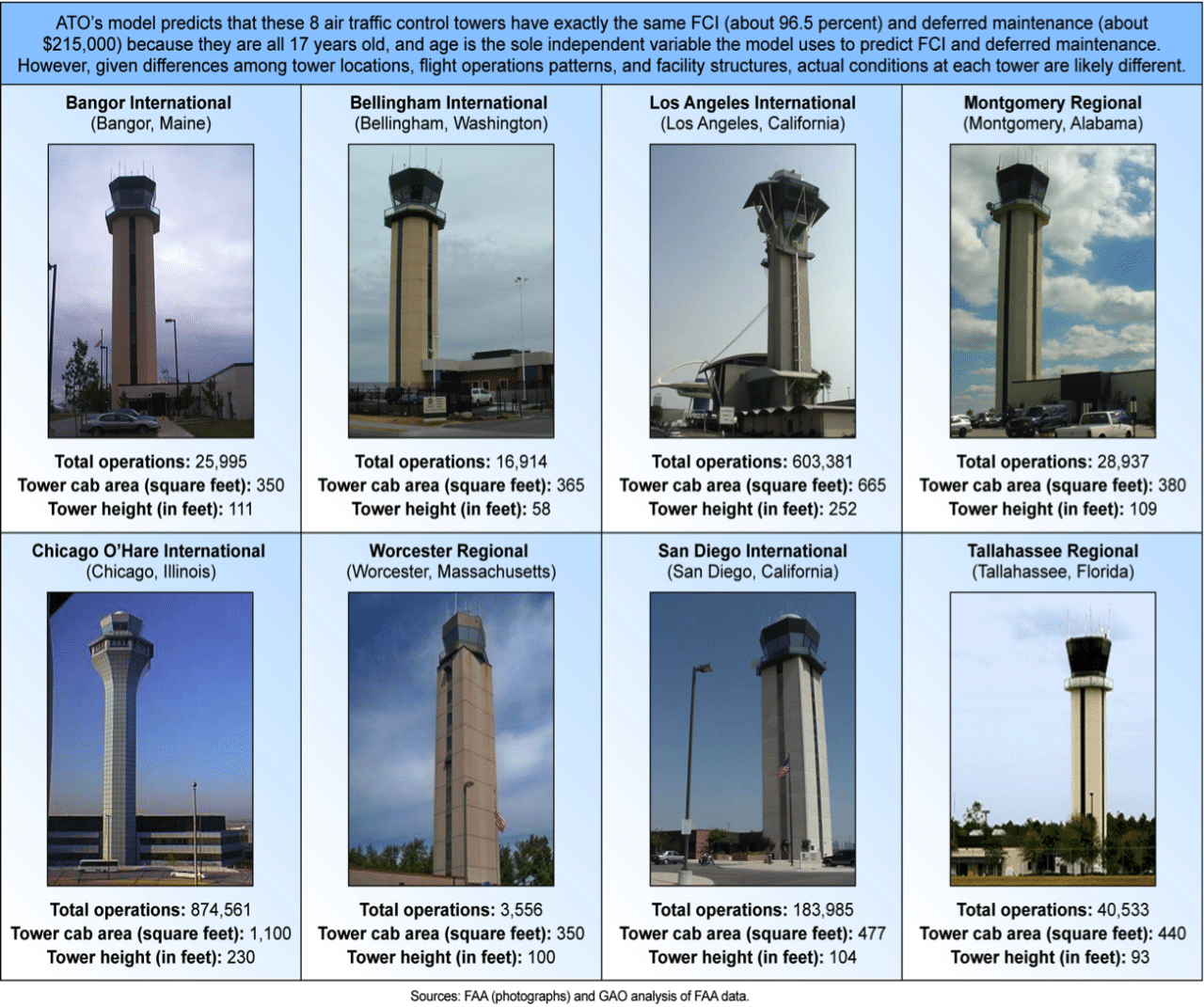FAA’s ability to assess the conditions of its facilities, such as air traffic control towers and research laboratories, is hindering its ability to properly manage its long-term capital investments and ultimately implement key components of NextGen, according to a Government Accountability Office (GAO) report released Tuesday.
FAA’s Air Traffic Organization (ATO) is facing a maintenance backlog for staffed operations facilities of $258.8 million. Improvements to the Real Estate Management System (REMS), FAA’s database for tracking its inventory of real property assets, are needed, as the report found that data regarding the size, replacement value and condition of assets are “not derived from sound data collection practices.” The agency uses a statistic it refers to as the Facility Condition Index (FCI) to rate the operating conditions of its facilities as a method for assessing which facilities need improvements.
According to the report, problems with REMS are also complicated by the structure of its agency-wide a comprehensive decision-making framework over the last decade, which was segmented between managers of the different facility types — terminal facilities, en-route centers, and unstaffed facilities — acted independently in identifying requirements and prioritizing facility modernization and replacement projects.

In 2012, the agency implemented a Facilities Group Manager position within the ATO to coordinate decision making for capital investments across all of the different types of air traffic facilities. GAO auditors found that prior to this change, managers of the different facilities “competed with each other for funding and did not ensure common practices in planning and implementing modernization and replacement projects.”
ATO’s Facilities Group Manager is making huge strides towards aligning priorities for long-term decision making regarding various types of air traffic facilities. For example, auditors note that his efforts to identify requirements and prioritize facility modernization and replacement projects will help accelerate FAA’s En-route center and TRACON consolidation plan. By 2034, the agency is looking to consolidate its en-route centers and TRACONS into six large facilities, though FAA officials told GAO the implementation of this plan has been delayed due to “significant funding reductions.”
Furthermore, the report found that many of ATO’s aging facilities are in need of funding for modernization projects because a significant portion of them have not received funding for modernization since the 1990s.
The GAO report concludes that FAA’s agency wide REMS data tracking system has “inconsistent data collection practices” which is leading to uncertainty about the conditions of its facilities and posing the risk of inaccurately assessing its long-term capital investment plans and transition to NextGen.
The agency is recommending Transportation Secretary Anthony Foxx direct FAA Administrator Michael Huerta to improve the methods used by ATO to determine maintenance needs at terminal air traffic control towers; and develop a plan to dramatically improve REMS.
Related: FAA, Industry Continue Push to Repeal Sequester